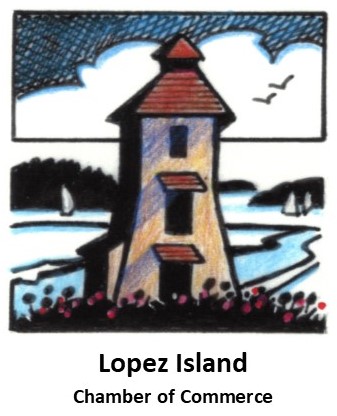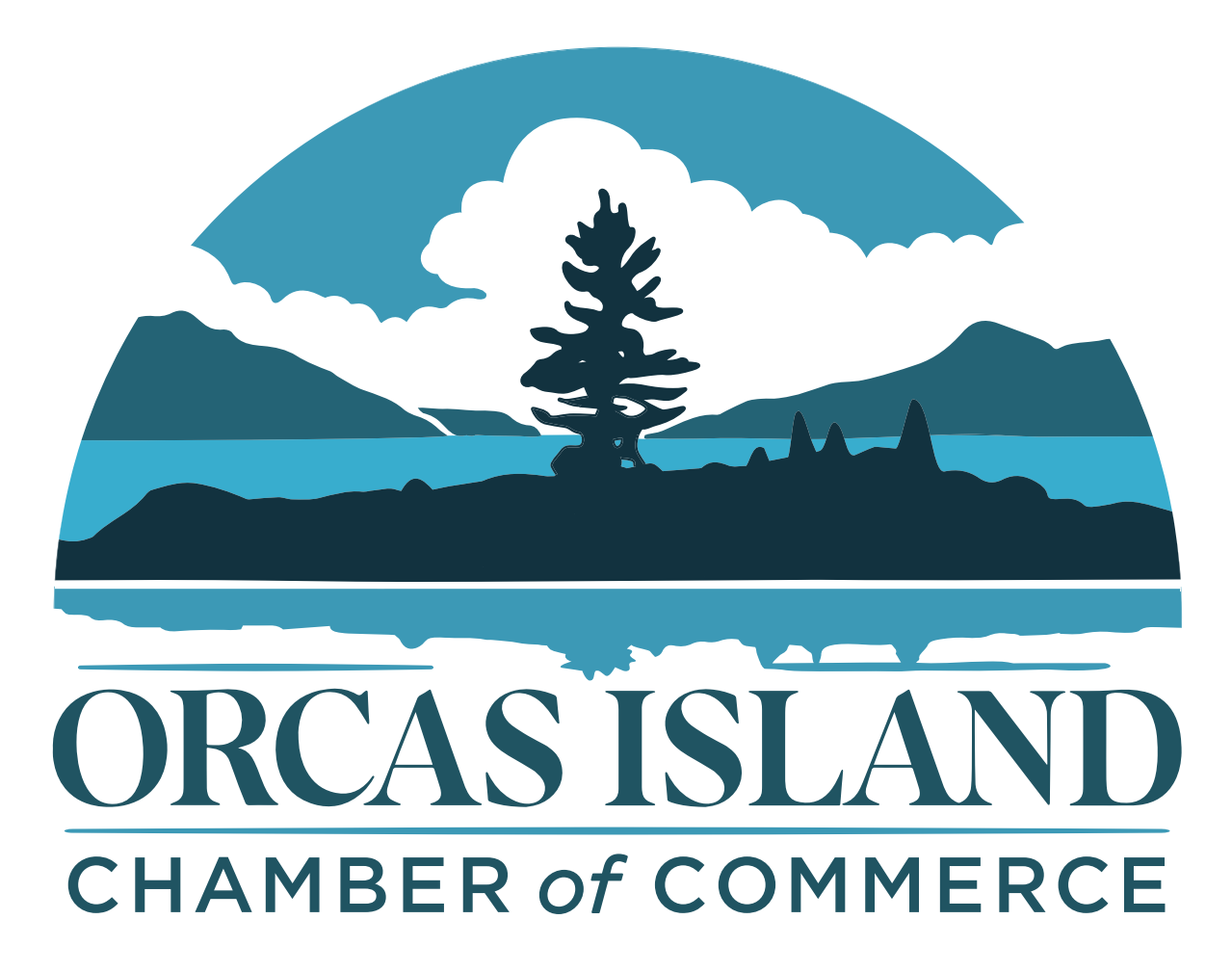Accessible San Juan Islands
Washington's emerald isles immersed our family in Northwest nature and gently nudged us to slow down to the pace of "island time"
If I think back on the past few years, two words come to mind: staying home. Sure, we tried to work around the pandemic and still get out and about, masked and sans crowds. Day trips and short hikes were the norm, plus a few camping adventures and mountain vacation rentals thrown in to keep some sanity and connection to nature during the worst of the pandemic. Still, this past rainy winter left us feeling pretty rough around the edges. Diagnosis: cabin fever! So during a (brief) lull in Omicron waves, we decided to take a week off and go on a real trip.
When my family plans a trip, we look for two things: first, are there ample, accessible opportunities to be in nature? And second, can we accommodate our son Isaac's special needs? He's autistic, and like many autistics, he can become overwhelmed pretty easily around lots of people, noise, and certain smells, and he's got some food allergies and physical challenges as well. Yet, he is also a sensory-seeker; Isaac absolutely thrives in some sensory-rich environments, especially nature and art. We avoid unpredictability and crowds when we travel, and usually skip dining in restaurants, too (not hard to do when your lodging has a kitchenette, and there’s always takeout). In short, an ideal getaway for us offers independent, uncrowded exploring with lots of short forays into nature that stimulate all the senses and inspire curiosity.
The family decision for our first real getaway in two years was unanimous--the San Juan Islands!
San Juan Island
Our adventure began with boarding the ferry from Anacortes to San Juan Island on a Monday so we could take full advantage of the slower pace of mid-week travel. (Tip: reserve your ferry crossing in advance, even on slower travel days, at wsdot.wa.gov). We brought our car along, though San Juan Island is the easiest of the islands to visit without one--the ferry lets you off smack-dab in the middle of bustling Friday Harbor with lots of eateries, good hotels, and indie boutiques. You can get around from there via San Juan Transit (several buses have a lift or ramp to accommodate wheelchairs).
San Juan Island is rich with local history. Our overnight digs were one of the historic cottages at Roche Harbor Resort on the island's northwestern tip. Set right on the shores of the harbor, our cute cottage had two nice-sized bedrooms and a full kitchen stocked with all the necessary cooking supplies (make a stop in Friday Harbor at Kings Market for groceries before you drive up here). The best seat in the house was on the cottage's front porch for morning coffee and watching the evening sun set over the water. These cottages hail from the 1890s and housed the families of men who worked hard labor jobs at Roche Harbor lime works (then the "Largest Lime Works West of the Mississippi.") A few of the huge kilns are still standing next to the historic Hotel de Haro, which also looks out over the sailboat-dotted harbor and is surrounded by well-kept English flower gardens, a firework display of bright hues in summer. Guided kayak excursions depart from here, and there's a tasty homemade donut shop on the dock.

If you want to see some orcas, come to San Juan Island. The best whale watching from shore is a short drive south of Roche Harbor at Lime Kiln Point State Park, a 41-acre day-use park on a rocky bluff that overlooks Hara Strait across to the southern tip of Vancouver Island (Discover Pass required). Take the ADA-accessible trail to the lighthouse, hike down through a hillside forested with madrone trees to the whale watching overlook, or walk to the historic lime kiln. Orcas sometimes venture quite close to the shore here, especially in summer and at high tide. We brought some snacks and binoculars down to a picnic table at the overlook and scanned the horizon for about an hour. We saw a few splashes that may have been an orca pod in the distance, but none came close to shore on the day we were there.
Outdoor sculpture parks are my new favorite thing. You might agree our Pacific Northwest wild lands are works of sculpture all their own --twisted madrona trees, cedars draped whimsically in chartreuse moss, spiky ferns that carpet a forest floor. The artists of San Juan Island have taken the "art in nature" concept a bit further, creating a 20-acre art museum without walls on rolling hills and enchanting woods. The San Juan Islands Sculpture Park is home to 150 unique outdoor art creations by world-renowned sculptors. We loved this place so much that we returned to it twice, and I'm still not sure we saw it all. The paths are mostly flat and you can take in a little or a lot. The sculptures offer lots of sensory experiences for people like my son who seek them out, from kinetic wind chimes to varying textures and colors. The park is located on the north end of San Juan Island in Roche Harbor, and is open daily from dawn to dusk, and it's free (donations appreciated).
English Camp, the northern section of San Juan Island National Historical Park, is even closer to Roche Harbor. The Royal Marines were stationed here for several years during the 1850s and 1860s, a time when both the United States and Great Britain claimed sovereignty over the San Juan Islands (the dispute was resolved in 1872, giving the islands to the U.S.). We loved roaming the Garrison Bay waterfront prairie habitat here in search of birds and wildflowers (note to self: next time bring a blanket, a thermos of Earl Grey tea, and a basket of crumpets to enjoy under the Union Jack flag that still flies here). After you've roamed the prairie and English garden around the old compound, a sweet loop hike to Bell Point is short and easy.
We spent a whole afternoon exploring the tide pools and interpretive nature trails at American Camp, the larger unit of San Juan Island National Historical Park on the island's southern tip. This was where the U.S. Army troops were stationed during the "Pig War" dispute (a few officers' quarters still stand), and I must say they had the preferable climate in winter. This portion of the island sits in the Olympic rain shadow, a "blue hole" thanks to a special mix of weather and topography, that receives far fewer inches of rain each year than much of the region. You'll notice this in the drier terrain here--several miles of trails amble through tallgrass prairie and along the untamed beaches. Bring binoculars to scan the water for passing whales and sea lions, and if you're lucky, to spot one of the red foxes that inhabit the park. We had such luck on the South Beach loop watching an adult fox stalk several rabbits about a dozen yards away from us. Note, while there are no ADA-accessible trails in the park, there are two navigable for some wheelchairs. If you like, a volunteer will gladly transport your party in a 6-person golf cart through the parade grounds and open bluff prairie; there's no need to reserve this, just ask at the interpretive center.
Lopez Island
For the rest of our getaway, we hopped the ferry from Friday Harbor to friendly Lopez Island with its quiet coves and driftwood-strewn beaches.
The flattest of the main islands, Lopez's quiet country roads that criss-cross among family farms and peaceful pastureland seem to be made for riding bicycles, and we passed several small groups of cyclists as we explored the island. You can bring your own bikes or rent them at Village Cycles in town, or at Lopez Bicycle Works on Fisherman Bay. We'd brought our hiking boots instead, so we were off to explore trails and tidepools.
The pebble beach at Fisherman Bay Spit Preserve is one of our favorite spots on the islands for beachcombing, and I was able to add to my collection of colorful agates on our stroll there. From the parking lot, it's a short hike through an old orchard and homestead and around some sand dunes to the spit--hit it at low tide and search for treasure. We enjoyed a very close encounter with an eagle here snacking on its lunch (a washed-up raccoon) while a trio of patient turkey vultures waited nearby for their turns. Towards the end of the spit are some washed-up old wooden boats that have come to rest, resembling driftwood sculptures.
Speaking of driftwood sculptures, don't miss a stop along Port Stanley Road along Swifts Bay up near Spencer Spit State Park where an ordinary driftwood beach has transformed into a whimsical art gallery of driftwood people, prehistoric birds, and spooky animals, courtesy of the creative whims of residents nearby.
Spencer Spit State Park is the island's top spot for camping (it has one ADA campsite and a few accessible trails) and is a great spot for launching a kayak, digging for clams, or dropping a crab pot into Swifts Bay.
The highlight of our visit was a short hike in to Shark Reef Sanctuary on the island's west shore. A nature trail through beautiful woods leads to a rocky outcrop dotted with twisted madrone trees and the most incredible view south into the Salish Sea. Bring binoculars and come at low tide, because that barking you hear on those rocks just offshore is coming from boisterous seals as they sun themselves, as seals do. Isaac enjoyed the wind on his face as he counted the seals and watched as pups competed for prime real estate on the rocks.
Tiny Lopez Village is the island’s only settlement, and it's just a few short streets lined with cafés and a grocery store. Farms, public beaches, and restaurants are scattered throughout the island. We stayed at the Lopez Islander Resort and Marina south of town on Fisherman Bay, where our room had a large deck facing the water and was the perfect spot for enjoying our takeout--steamed clams and pan-fried oysters from the Islander Bar & Grill.
Beauty and nature followed us wherever we went on our week of respite in the San Juan Islands, and we can't wait to return.

Accessible tourism helps ensure that the places we visit and the services we enjoy are accessible to all people, regardless of their disabilities, physical limitations, or age. There are millions of us travelers who require accommodations to have equal access to travel, and we hope the movement towards accessibility is less of a trend and more of a new normal. For more on accessibility in the San Juan Islands, visit https://www.visitsanjuans.com/accessible.

Lauren Braden is an outdoor adventure and travel writer who lives in Seattle, and is the author of the new book 52 Ways to Nature, Washington: Your Seasonal Guide to a Wilder Year published by Mountaineers Books. Organized by season, 52 Ways to Nature: Washington features immersive activities to keep you engaged with nature throughout the year, like history hikes, stargazing, clam digging, and animal tracking. This twist on a Northwest guidebook offers ideas to get you outdoors and encourages you to keep track of those experiences through journal notes. Several of the book's activities feature outdoor adventures and destinations in the San Juan Islands. Find more of her work at Northwest TripFinder, nwtripfinder.com


















